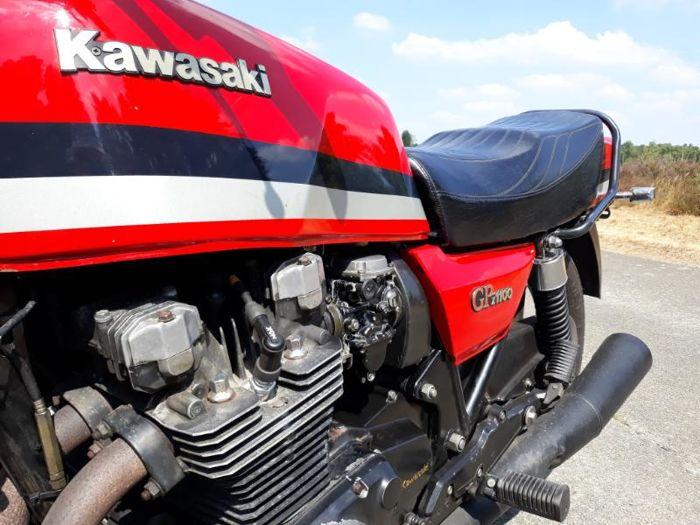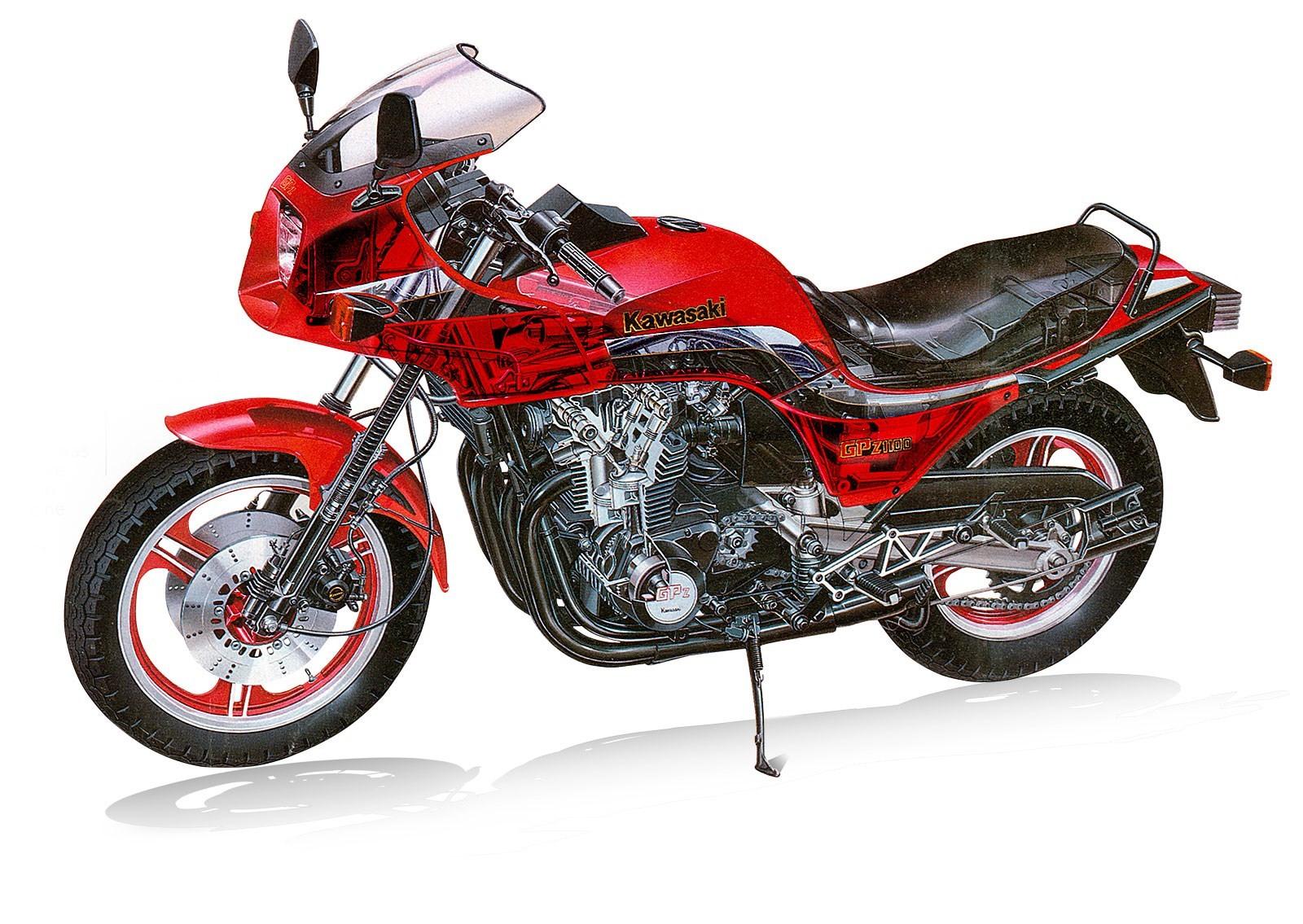The original father, the Kawasaki Z1 (900 c), the engine that technically pushed the Honda CB750 ohc off the throne came from 1972. The four-cylinder with double overhead camshafts supplied 81 hp and was already a classic at the beginning of the nineties.
Up to 1100 cc
But up to the eighties, the Kawasaki GPZ 1100, which grew to 1100 cc, also stood their ground. For example, the Kawasaki GPZ 1982 presented in 1100 was good for 108 hp at 8.500 rpm And in - say - 1998 and 2018, that is still a guarantee for impressive performance.
The success of the GPZ was in its simplicity
Because in terms of construction, the Kawasaki GPZ 1100 engine was still very close to that of its original father. In fact, the injection was the most far-reaching change. And that the consumption despite the piece of product development - which also contributed to the impressive torque - with pleasant use was nevertheless on the 1 on 12,5? Mwah ..
The size of the Kawasaki is good for mature Dutch people. But shorter and slender sculpted fellow M / F people can have a hard time with it. The thing weighs roadworthy something of 265 kilos. The seat height of 80 cm may have decreased by a few centimeters over the years, but remains serious work.
Kawasaki blocks have always been raw runners
And they generate high-frequency vibrations that do very unfriendly things with lights, bolts, nuts and the license plate. The four-pitters are (also at no-load) mechanically quite noisy. On motorcycles with experience such as our classics, you often hear the camshaft chain tensioner, a component that needs to be replaced every 25D kilometer.
A good buy!
But because these motorcycles are not really Wanted classics, prices and maintenance levels are often at a sub-modal level. There is then work to be done after purchase. And with that purchase it must be taken into account that these four-cylinder engine, which is now quite old, needs a revision between the 50.000-60.000 kilometers.
Metallic noise when accelerating under load can indicate bearing damage. If you then see it as an investment, you have to wait a very long time for your return on investment. Because after a complete block revision you are just € 2.500 on.
And then there should not be much work involved in the injection. But oh well: as long as the engine is working properly and the oil consumption is not higher than 1 on 1200 you are pleasant and dynamic on the road on such a big Kawasaki GPZ 1100. If the oil consumption near the 1 comes to 600-700, then you can still be lucky that you are out of trouble after replacing the seals of the valve guides.
These motorcycles were beasts
Many fast kilometers were often made with it. They are sold well, but it is no longer easy to find a good technical specimen. But if you succeed, then you have a wonderfully raw brute from a traveling companion. The driving behavior and the brakes are of course heavily dated. But with a Kawasaki GPZ 1100 of the first generation you still have a great machine under your ass.
The second generation: more elegant





… ”Between 50-60.000 need overhaul” ..?
And that is called a throne-rejection on a Honda Four ..?
True to that throne. I drove both, the Honda blocks usually turned a bit better but the kawas were a bit more “scrap iron”.
But I haven't come across an old Honda Four that is 'on' with 50k ...